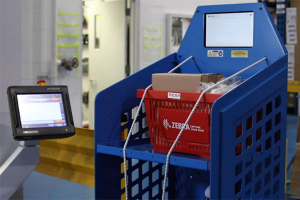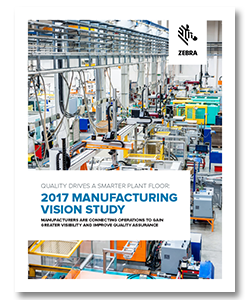2017 Manufacturing Vision Study: Quality Drives a Smarter Plant Floor
Manufacturers are connecting operations to gain greater visibility and improve quality assurance.
STATE OF THE INDUSTRY
The global manufacturing industry is in the midst of a dramatic transformation that will profoundly alter plant floor operations. With a desire to connect every stage of the manufacturing process, including end-to-end supply chain fulfillment, manufacturers are turning to automation to improve quality and gain unprecedented visibility.
Driven in large measure by globalization, intensifying competition and, perhaps most importantly, increasingly complex bills of materials due to rising customer demands for product variety — a connected plant floor has become a necessity to ensure high-quality products.
For the first time in decades, investment decisions are no longer being driven by short-term return on investment (ROI) calculations alone, but increasingly on long-term quality performance metrics. Companies simply can’t afford to produce defective or sub-standard products and maintain their competitive edge. The cost of poor quality in terms of scrap, reworks, returns and defects is simply too high.
Add to that customer complaints, a lack of customer confidence, and ultimately the loss of brand loyalty, and it’s evident that poor quality products can cause irreparable damage to a company’s reputation. In their quest to achieve error-free production, suppliers and manufacturers are making incremental changes to their plant floor operations and moving toward a fully connected, smart factory.
THE RISING IMPORTANCE OF IIoT
Manufacturers are adopting Industry 4.0 and the smart factory, in which workers use a combination of RFID, wearables, automated systems and other emerging technologies to monitor the physical processes of the plant and enable companies to make decentralized decisions.* In the factory and across the supply chain, firms are also capitalizing on the Industrial Internet of Things (IIoT) to achieve real-time visibility into their goods, assets, processes and places.
With automation comes instant access to data which is essential to ensuring that the production process operates smoothly.
Importantly, data gives suppliers the ability to anticipate the needs of their customers. It also enables manufactures to keep less inventory on hand and eliminate points-of-failure. In fact, 50 percent of respondents stated that improving their ability to adjust to fluctuating market demands is one of their top business growth strategies.
Manufacturers are already realizing the very real benefits of data connectivity: increased visibility into the entire manufacturing process; an accelerated pace in shipping and receiving; faster identification of points-of-failure; and deeper insights into the interworkings of their operations.
What’s Related




Favorites





